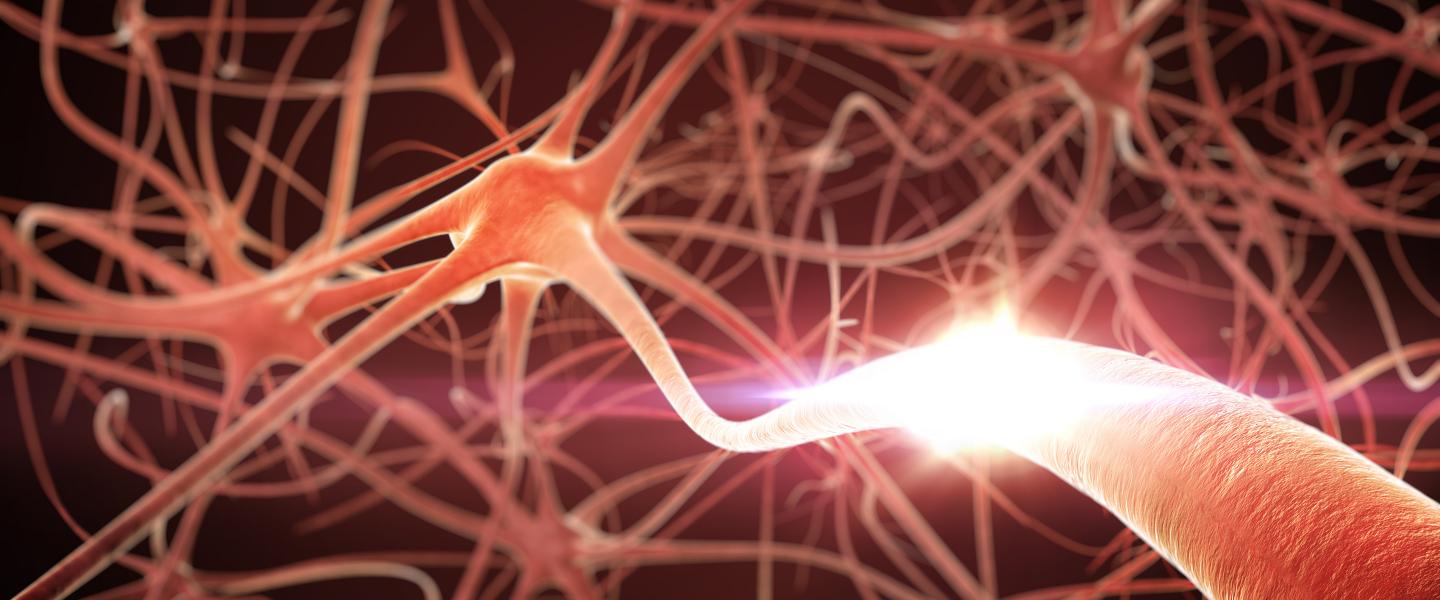Sleep Spindles
Sleep spindles are a pattern of brain waves people experience during certain stages of sleep. Experts are still working on understanding the significance and purpose of sleep spindles, and why their frequency and form can vary from person to person.
What Are Sleep Spindles?
The term sleep spindles refers to a specific pattern of brain waves that occurs during sleep. Sleep spindles are identified by electroencephalography (EEG), which measures electrical activity in the brain.
Researchers do not fully understand the purpose or meaning of sleep spindles, but sleep spindles are being further studied in both animals and humans. They are thought to play a role in brain plasticity, or the process of learning and integrating new memories. Sleep spindles also appear to diminish our response to outside stimuli while sleeping.
The Relationship Between Sleep Spindles and Sleep
Sleep spindles generally only occur during certain stages of sleep. Generally, sleepers cycle through four stages of sleep each night. These four stages are broken up into two categories: rapid eye movement (REM) and non-rapid eye movement (NREM).
Sleep stages 1, 2, and 3 are categorized as NREM sleep, and stage 4 is REM sleep. We spend approximately 75% to 80% of our total sleep time in NREM sleep, which involves a slowing of brain activity, breathing, and heart rate. During REM sleep, our limbs stay paralyzed, but our brain activity, breathing, heart rate, and eye movements are more similar to what occurs when we are awake. Dreaming can occur in any sleep stage, but it is more common to have vivid and complex dreams during REM.
Sleep spindles are an indicator of NREM sleep. When sleep spindles appear on an EEG readout, that shows a person has fallen asleep. Sleep spindles may be present in all stages of NREM, but they are most prevalent in stage 2 sleep , which we tend to enter for the first time shortly after falling asleep. Sleep spindles do not occur during REM sleep. Since they occur early on in the sleep cycle, sleep spindles also occur during napping, not just nighttime sleep.

How Are Sleep Spindles Measured?
Sleep spindles are measured by electroencephalography, or EEG. An EEG measures activity in different areas of the brain through about 20 electrodes attached to the scalp. These electrodes act as sensors. They transmit information from the scalp to a machine through wires. The machine then records the brain’s electrical activity in the form of waves. Professionals look at these waves for patterns and abnormalities. An EEG is included as part of polysomnography, or a sleep study, and it can also be used as a stand-alone test to check for abnormal brain activity, such as seizures.
Sleep spindles take the form of smooth sine waves on an EEG readout. Professionals identify them by their frequency, which ranges from 11 to 16 Hertz (Hz).
Since sleep spindles occur in the midst of slow-wave sleep, they are easy to identify due to their increased frequency. Sleep spindles look like a burst of activity in the midst of less dense, less frequent waves. They first increase and then decrease in amplitude, giving them a characteristic appearance that resembles a wool spindle. A single sleep spindle generally lasts between 0.5 and three seconds and they occur every three to six seconds.
Sleep spindles can be further categorized into two types: fast spindles and slow spindles. These types of spindles are differentiated by their frequencies. Each type originates in a different part of the brain. Fast spindles are higher than 13 Hz and they are found in the centroparietal region, which is near the center of the brain. Slow spindles are lower than 13 Hz and they are more prevalent in the frontal region, or the front of the brain closer to the forehead.
Along with another wave pattern called K-complexes, sleep spindles are considered a hallmark of stage 2 NREM sleep.
What Do Sleep Spindles Do?
Sleep spindles occur not just in humans but also in many other mammals, and experts have debated the purpose of sleep spindles for years. Scientists believe sleep spindles occur as a result of activity in the thalamus, the thalamic reticular nucleus, and the neocortex. There are multiple possible reasons we experience sleep spindles:
- Sensory Shutdown: The thalamus is involved in processing sensory input. Sleep spindles appear to target this brain region and suppress information about external stimuli to reduce the chance of the sleeper waking up.
- Learning and Memory: After intense study, a sleeper experiences an increase in sleep spindles in the areas that were being used during learning. Sleep spindles are likely involved in memory processing and help commit learned information to long-term memory.
- Motor Ability: Studies show an increase in fast sleep spindles when people are learning new motor tasks such as finger tapping, leading researchers to believe that fast sleep spindles may play a role in motor sequence learning .
Why Do Some People Have Unusual Sleep Spindles?
Unusual sleep spindle activity is related to multiple different physical and mental health issues. Scientists are interested in understanding how sleep spindles relate to different conditions, in order to better diagnose and predict the onset of these diseases.
- Aging: Sleep spindle activity changes in some people as they age . In older adults, sleep spindles happen less often, and they tend to be smaller and last for less time. Reduced spindle activity has implications for memory and learning, and it is linked to memory impairment in people with mild cognitive impairment and Alzheimer’s disease.
- Chronic Pain: More research is needed, but chronic pain appears to be associated with reduced sleep spindle activity . Increased sleep spindles are associated with a decrease in pain, suggesting that a treatment that increases sleep spindles could be a potential chronic pain therapy.
- Coma: When a person is in a coma, they do not usually experience normal sleep stages. Researchers propose that the appearance of sleep spindles in a coma is a good sign, and indicates that the person is more likely to come out of the coma.
- Dyslexia: Children with dyslexia show increased slow spindle activity compared to children without dyslexia. Researchers hypothesize that individuals with dyslexia compensate for problems in one brain region by leveraging other brain regions, which enable them to decipher words, albeit more slowly. The increased sleep spindles represent increased activity as the brain sends information from one region to the other, with spindle density appearing to correlate with the severity of the dyslexia.
- Epilepsy: Several types of epilepsy are characterized by seizures that include spike and wave discharges , periods of brain activity that resemble slower sleep spindles. Just like sleep spindles, spike and wave discharges also occur often during light NREM sleep, leading researchers to believe the two phenomena share similar pathways. More research is needed to understand how sleep, epilepsy, and anti-epileptic drugs interact.
- Neurological Disorders: People who experience neurological disorders, such as Alzheimer’s disease, Parkinson’s disease, and dementia, tend to have a lower than normal spindle density. This finding suggests sleep spindle reduction could be connected with cognitive decline in these disorders.
- Psychiatric Disorders: Sleep spindle disturbances and reduced spindle activity are associated with psychiatric symptoms. These changes have been found in people with both anxiety disorders and schizophrenia. In schizophrenia, reduced spindle activity is believed to have a genetic component, and it may explain difficulties with memory and learning. Studies of children and adolescents with social anxiety disorder have found that heightened reactivity to negative stimuli goes hand-in-hand with reduced fast sleep spindles. Reduced sleep spindle activity is associated with early-onset depression.
- Stroke: People who experience a stroke may have reduced sleep spindle activity. Whether or not a person who had a stroke experiences this sleep change depends on the type and location of the damage.

Still have questions? Ask our community!
Join our Sleep Care Community — a trusted hub of product specialists, sleep health professionals, and people just like you. Whether you’re searching for the perfect mattress or need expert sleep advice, we’ve got you covered. Get personalized guidance from the experts who know sleep best.
References
13 Sources
-
Fernandez, L. M. J., & Lüthi, A. (2020). Sleep spindles: Mechanisms and functions. Physiological Reviews, 100(2), 805–868.
https://pubmed.ncbi.nlm.nih.gov/31804897/ -
Schneider, W. T., Vas, S., Nicol, A. U., & Morton, A. J. (2020). Characterizing sleep spindles in sheep. eNeuro, 7(2), ENEURO.0410-19.2020.
https://pubmed.ncbi.nlm.nih.gov/32122958/ -
Purcell, S. M., Manoach, D. S., Demanuele, C., Cade, B. E., Mariani, S., Cox, R., Panagiotaropoulou, G., Saxena, R., Pan, J. Q., Smoller, J. W., Redline, S., & Stickgold, R. (2017). Characterizing sleep spindles in 11,630 individuals from the National Sleep Research Resource. Nature Communications, 8, 15930.
https://pubmed.ncbi.nlm.nih.gov/28649997/ -
Gerstenslager, B., & Slowik, J. M. (2020). Sleep study. In StatPearls. StatPearls Publishing.
https://pubmed.ncbi.nlm.nih.gov/33085294/ -
Iotchev, I. B., & Kubinyi, E. (2021). Shared and unique features of mammalian sleep spindles — Insights from new and old animal models. Biological Reviews, 96(3), 1021–1034.
https://pubmed.ncbi.nlm.nih.gov/33533183/ -
Barakat, M., Doyon, J., Debas, K., Vandewalle, G., Morin, A., Poirier, G., Martin, N., Lafortune, M., Karni, A., Ungerleider, L. G., Benali, H., & Carrier, J. (2011). Fast and slow spindle involvement in the consolidation of a new motor sequence. Behavioural Brain Research, 217(1), 117–121.
https://pubmed.ncbi.nlm.nih.gov/20974183/ -
Mander, B. A., Winer, J. R., & Walker, M. P. (2017). Sleep and Human Aging. Neuron, 94(1), 19–36.
https://pubmed.ncbi.nlm.nih.gov/28384471/ -
Caravan, B., Hu, L., Veyg, D., Kulkarni, P., Zhang, Q., Chen, Z. S., & Wang, J. (2020). Sleep spindles as a diagnostic and therapeutic target for chronic pain. Molecular Pain, 16, 1744806920902350.
https://pubmed.ncbi.nlm.nih.gov/31912761/ -
Kang, X. G., Yang, F., Li, W., Ma, C., Li, L., & Jiang, W. (2015). Predictive value of EEG-awakening for behavioral awakening from coma. Annals of Intensive Care, 5(1), 52.
https://pubmed.ncbi.nlm.nih.gov/26690797/ -
Bruni, O., Ferri, R., Novelli, L., Terribili, M., Troianiello, M., Finotti, E., Leuzzi, V., & Curatolo, P. (2009). Sleep spindle activity is correlated with reading abilities in developmental dyslexia. Sleep, 32(10), 1333–1340.
https://pubmed.ncbi.nlm.nih.gov/19848362/ -
Leresche, N., Lambert, R. C., Errington, A. C., & Crunelli, V. (2012). From sleep spindles of natural sleep to spike and wave discharges of typical absence seizures: is the hypothesis still valid?. Pflugers Archiv: European Journal of Physiology, 463(1), 201–212.
https://pubmed.ncbi.nlm.nih.gov/21861061/ -
Wilhelm, I., Groch, S., Preiss, A., Walitza, S., & Huber, R. (2017). Widespread reduction in sleep spindle activity in socially anxious children and adolescents. Journal of Psychiatric Research, 88, 47–55.
https://pubmed.ncbi.nlm.nih.gov/28086128/ -
Mensen, A., Poryazova, R., Huber, R., & Bassetti, C. L. (2018). Individual spindle detection and analysis in high-density recordings across the night and in thalamic stroke. Scientific Reports, 8(1), 17885.
https://pubmed.ncbi.nlm.nih.gov/30552388/















































